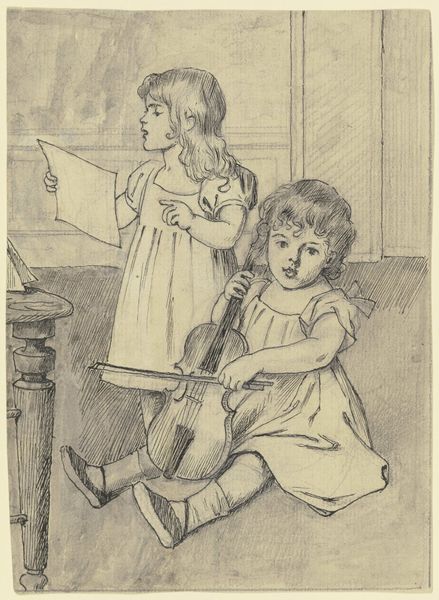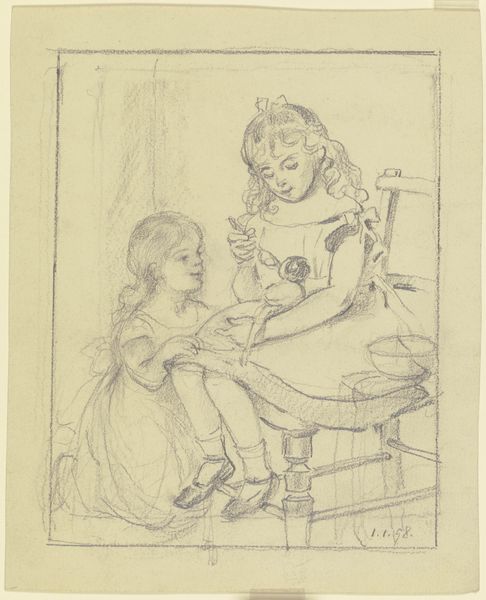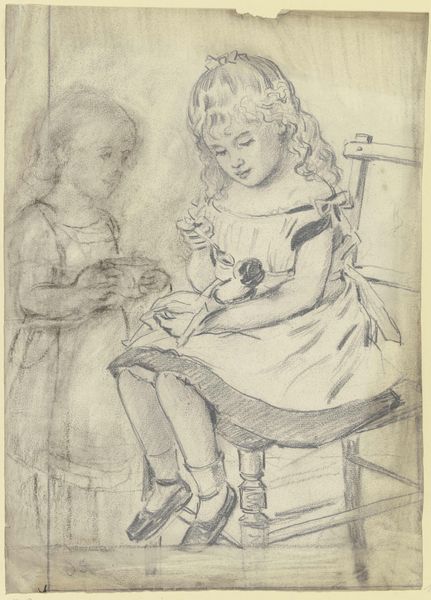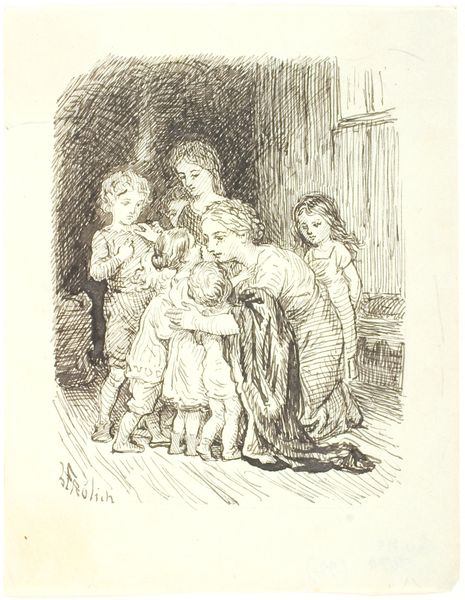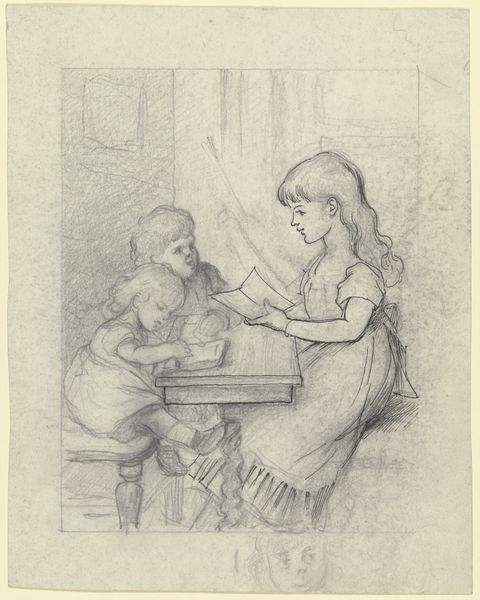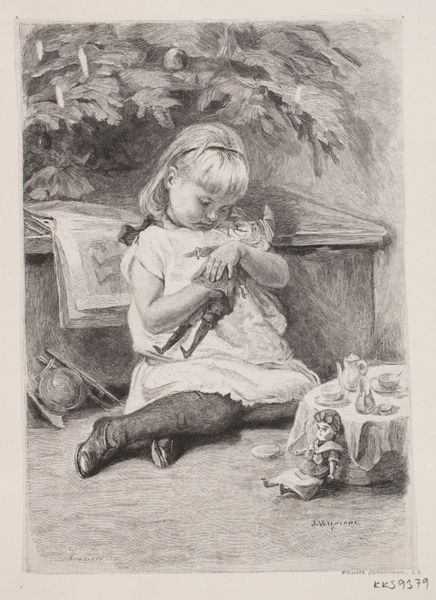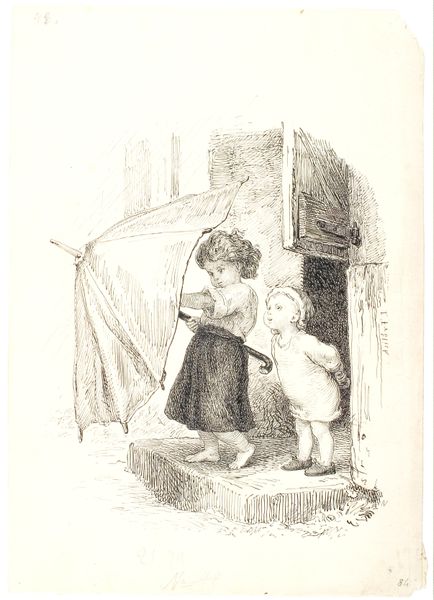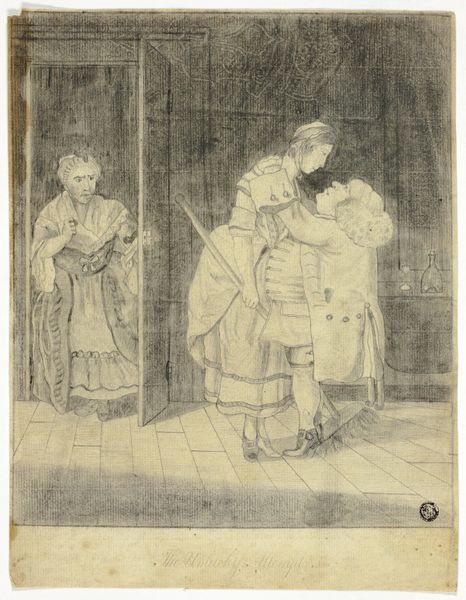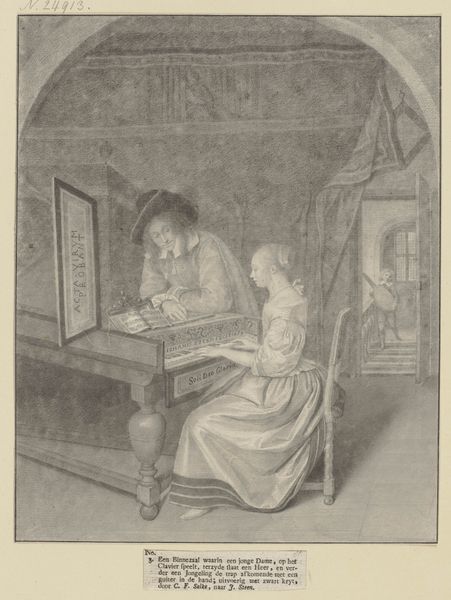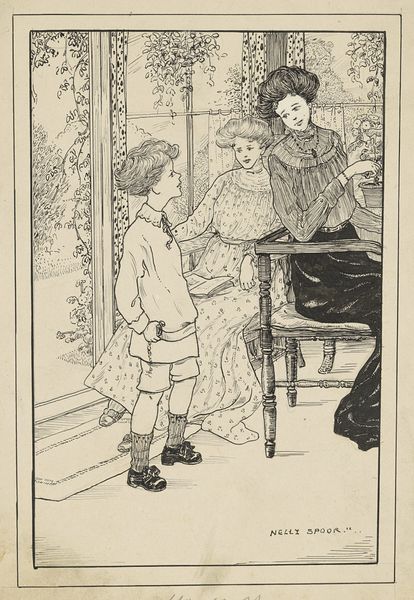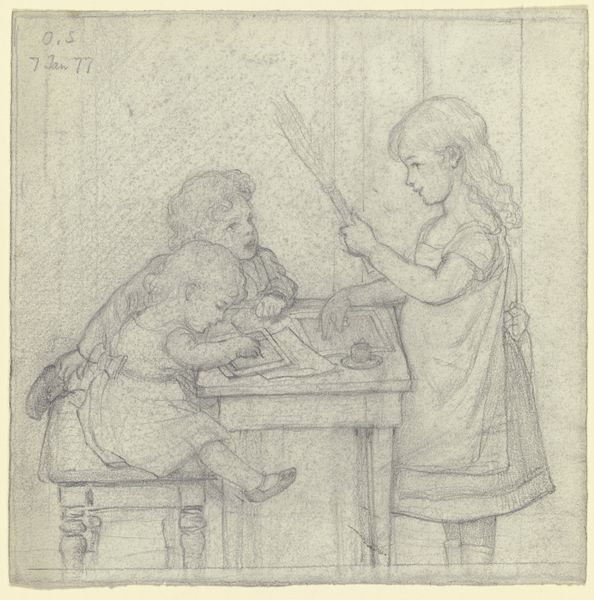
drawing, paper, ink
#
portrait
#
drawing
#
figuration
#
paper
#
ink
#
genre-painting
Copyright: Public Domain
Editor: This is Otto Scholderer’s "Two children playing music", rendered in ink on paper. It's currently held at the Städel Museum. I’m immediately struck by its intimacy and informality. What do you make of this piece? Curator: Well, viewing this through a historical lens, genre paintings depicting children, especially engaged in domestic activities, gained considerable popularity in the 19th century. They offered a certain… idealized view of bourgeois family life. Do you think that's at play here? Editor: Perhaps. I see it, but something about the drawing, with its unfinished quality, pushes back on that perfect image a bit, doesn’t it? It almost feels like a quick sketch, a fleeting moment captured. Curator: Exactly. This seeming spontaneity challenges that overly polished aesthetic which dominated much art displayed in prominent exhibitions. Now, consider the cultural context. Music was highly valued and frequently performed in the home, serving both as entertainment and a marker of social status. Editor: So, by depicting the children practicing music, Scholderer's both showcasing and maybe critiquing the aspirations of a certain class? The music and the cello act as a visual symbol of affluence? Curator: Precisely! How does the setting of the interior space speak to the relationship between domesticity, childhood, and performance of social roles? Is it stage-managed? A theatrical display or an act of casual imitation? Editor: It's fascinating to consider the tension there. I came in thinking it was just a sweet domestic scene, but now I'm seeing it as a complex reflection on class and performance. Thanks! Curator: Indeed. Thinking about the social function of art like this helps to unlock its meaning. This exercise proves how much art reflects both ideals and lived realities, sometimes at odds with one another.
Comments
No comments
Be the first to comment and join the conversation on the ultimate creative platform.
